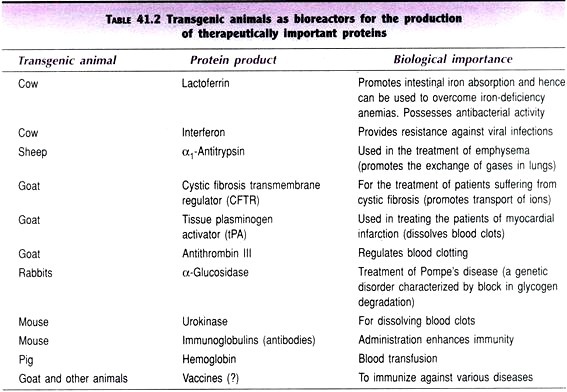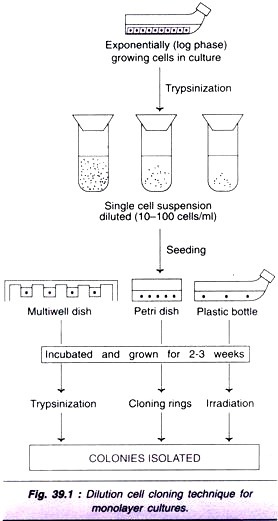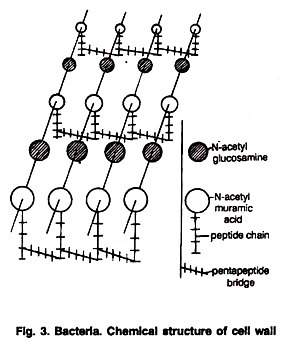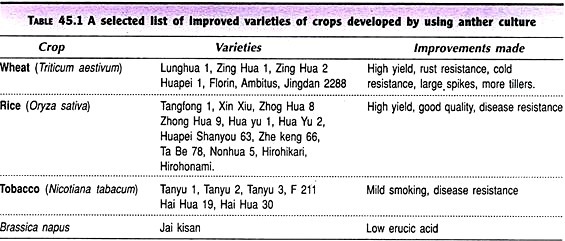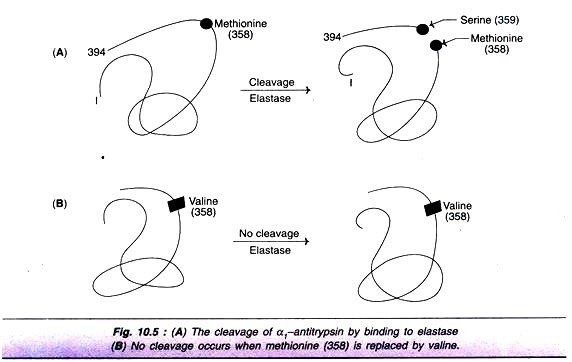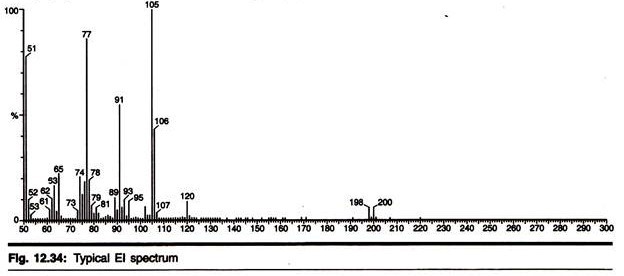Here we detail about the top eight techniques used in genomics.
The eight techniques are: (1) Genomic DNA Isolation, (2) Separation of DNA, (3) Cutting and Joining of DNA, (4) Cloning and Vectors, (5) Detection of Gene of Interest, (6) Recombinant DNA and Cloning, (7) Production of Multiple Copies of DNA Using Polymerase Chain Reaction (PCR), and (8) DNA Sequencing.
1. Genomic DNA Isolation:
As DNA is present in the nucleus of the cell, many methods are used to disrupt the external barriers like extracellular matrix, nuclear envelope and cell wall in case of plants.
These are achieved by treating the tissue or the cell with various types of detergents, which dissolve the external barriers. In case of plant cell, some enzymes are used like cellulase, pectinase, cellobiosidase, xylanase etc. which break down the cell wall.
Once the cell is broken the debris (extracellular matrix, membrane etc.) are removed by high speed centrifugation. After centrifugation the unwanted proteins and RNA is removed by treating with enzymes like protease (break down proteins) and RNAse (break-down RNA).
For isolation of very pure form of DNA, a technique called Density gradient ultracentrifugation is used (Fig. 81). In this, different cellular components are put on a gradient with varying densities (NaCl and Sucrose is used) and they are centrifuged at a very high speed of 40,000 rotation per minute to 70,000 (r.p.m.).
As different cellular components have different densities, they migrate and stop at the gradient where their density is equal to the density of NaCl and sucrose. In this way, DNA also stops at a particular density and it is extracted from the gradient tube.
2. Separation of DNA:
DNA molecules are negatively charged, so when they are subjected to an electric field they move from negative to positive electrode. For the movement of the DNA under the influence of electric current a medium is used which is called gel. This is a semisolid substance made from polymers like Agarose, Poly acrylamide etc.
This gelling material forms a porous network of fibers and the DNA molecules move through these pores. For separating large DNA molecules Agarose gel is used and for separating small DNA fragments Polyacrylamide gel is used. This method is called Gel Electrophoresis. For gel electrophoresis, a buffer is used which is involved in conducting the current across the gel.
When DNA molecules move from negative to positive electrode, the larger DNA molecules move slowly and are nearer to the negative pole. The smaller DNA molecules move faster and are positioned more towards the positive pole. This phenomenon is depicted in Fig. 8.2.
3. Cutting and Joining of DNA:
The recombinant DNA technology mainly involves the precise cutting and joining of DNA molecules. Special types of enzymes are used to cut DNA at a particular site, these are called Restriction Enzymes. The characteristic feature of the restriction enzyme is that it recognizes specific sequence (nucleotides) on the DNA molecules and cuts at that site. By this precise cutting they generate compatible ends of DNA molecule which can be later joined.
The type of sequence which is recognized by the restriction enzymes are called palindrome sequence (these are sequence which are mirror image of each other—Fig. 8.3). Once the DNA is cut by a restriction enzyme, the two pieces of any DNA molecule can be joined by another enzyme called Ligase.
4. Cloning and Vectors:
For inserting a piece of foreign DNA and to propagate the DNA fragment for large scale production a vector is used. Vectors are cloning vehicles which can replicate inside an appropriate host. Many different types of vectors are used for Molecular cloning—these are mainly Plasmid (circular double stranded DNA molecule), Cosmid (circular DNA molecules which can be also packaged inside a virus), bacteriophage (virus infecting different bacterial strains), etc. (Miller, 1992).
Once the appropriate vector is selected, it is cut by restriction enzyme to create a site for the insertion of the foreign DNA. Then the foreign DNA is ligated to the vector and is transferred into a host cell where the vector, along with the foreign DNA, can multiply. To select the vector inside the host cell, various type of selectable markers are used—like antibiotic resistance etc.
5. Detection of Gene of Interest:
For detecting a particular gene of interest the techniques which are commonly used are Southern Hybridization, Colony Hybridization, Dot blot (Sambrook et al. 1989). The principle behind these methods is simple. The DNA molecule of our interest which we want to detect is called the Target.
The DNA molecule with a known sequence with which we are going to detect the target molecule in a mixture of other DNA molecule is called a probe. The probe is prepared by incorporating radioactive isotope of phosphate. Usually P32 or P33 radioisotope of phosphate is used. The P32 or P33 is incorporated into dATP which is the building block of DNA. These are then incorporated in the probe molecule by the process called Labeling.
In Southern Hybridization, the target DNA molecule is separated according to its molecular weight by Agarose or polyacrylamide gel electrophoresis. Then DNA in the gel is denatured (DNA becomes single stranded) using an alkali like NaOH. After denaturation the DNA is transferred on to a solid surface like membranes made up of Nylon or Nitrocellulose.
The DNA transferred on the membrane is used as an replica and it is hybridized with the radiolabeled probe. After hybridization is over, the membrane is washed with buffers so that non-specific binding of the probe is removed.
The membrane is then dried and put in an X-ray autoradiography cassette. After exposure of the membrane bound probe with the X-ray film, the radioactive signal is detected on the X-ray sheet. The signal corresponds to the position of the gene of interest.
6. Recombinant DNA and Cloning:
Recombinant DNA is a chimeric DNA molecule which contains DNA from one source and some part of the DNA molecule is from another source. As explained earlier, the DNA molecule can be cut precisely at a particular point with the help of restriction enzymes. When two DNA molecules is cut with a particular restriction enzyme and are then joined by an enzyme called a ligase, the resulting DNA molecule is called a chimeric or recombinant DNA molecule.
Cloning means production of exact copy of any material. It is just like a Xerox machine, which keeps on producing the same copy of a document. Cloning is an essential part of Recombinant DNA technology. Cloning of a DNA molecule means producing identical copies of that DNA molecule. In this the DNA molecule is joined with a vector or vehicle (which is explained in the earlier section).
The vector contains the information for the replication which is also known as origin of replication. Due to the presence of Origin of Replication in the vector DNA, the vector—when introduced inside a host cell replicates. When replication of the vector takes place it also produces large copies of its own and also .that of the foreign DNA (Fig. 8.4).
7. Production of Multiple Copies of DNA Using Polymerase Chain Reaction (PCR):
Multiple copies of a DNA molecule can be produced by PCR. In 1983, biochemist Kary Mullis established the principle of polymerase chain reaction (PCR). This can only be done if parts of the sequence in question are known. In this the template DNA molecule (from which we want to make multiple copies) is denatured at high temperature 94°- 95°C (DNA becomes single-stranded form).
Then short single-stranded DNA are added known as primers (oligonucleotides of usually 20-25 bases in length). They mark the starting point of DNA synthesis once DNA polymerase and deoxynucleoside triphosphates have been added. Primers are homologues to the sequence of the template DNA.
The primers bind to the homologues sequence on the template DNA and this process is called annealing. Two primers are chosen which ensure through their position on the DNA fragment that synthesis starts at opposite ends of the fragment, bearing in mind that enzymatic polymerization runs from 5′ to 3′. After annealing a thermostable DNA polymerase is added called as Taq polymerase (derived from a heat-stable bacterium Thermus aquaticus and works at 72°C).
This thermostable polymerase is active even at higher temperatures like 94°-95°C. This polymerase keeps on adding the complementary bases to the primers and a new DNA molecule is synthesized. This entire process is repeated several times and each time it is called a cycle. Due to this reason the technique is called a Polymerase Chain Reaction (PCR).
In PCR the DNA is amplified in an exponential manner. This means that from one DNA molecule two DNA molecules are produced. These two DNA molecules serve as templates in the next cycle and forms four DNA molecules. This entire process is repeated in cyclic manner.
The repeated change in the temperature to complete different steps in a PCR cycle is done in a machine called a Thermal cycler (PCR machine). This is a Peltier technology based microprocessor controlled device, which is capable of quick change in temperature in few seconds (Fig. 8.5).
PCR is used not only for the amplification of genomic DNA, but also for detecting and analyzing RNA expression as well as cloning expressed genes. In these cases, the amplification process is preceded by a reverse transcriptase (RT) reaction. Form the RNA material to the analyzed, single-stranded cDNA is synthesized. This is known as RT- PCR.
8. DNA Sequencing:
To determine the sequence of a stretch of DNA a technique known as Sanger method of di+deoxy sequencing is used. In this method, the DNA is denatured and the primer is allowed to anneal to the DNA strand. Then the polymerization reaction is carried out in the presence of Klenow DNA polymerase and dNTP (deoxy ribo nucleotide triphosphate). Usually four reactions carried out and in each reaction are along with the mixture of dNTP, a di+deoxy nucleotide triphosphate (dd-NTP) is used— e.g. dd-ATP, dd-GTP, dd-CTP, dd-TTP (Fig. 8.6).
The principle behind the reaction is that the DNA Polymerase will synthesize the complementary strand of DNA and, during the synthesis, when the dd-NTP derivative is incorporated, the reaction will stop as there will be no available free hydroxyl group at the 3′ end. By this process fragments of different length will be produced which will be rediolabelled at the 5′ end.
These small fragments are then resolved in an Acylamide- Urea sequencing gel and Autoradiography is done to know the exact position of the bands. From the position of the bands we can determine the sequence of the DNA as the lowest band (smallest band) will be the first base at which the sequence is terminated.
